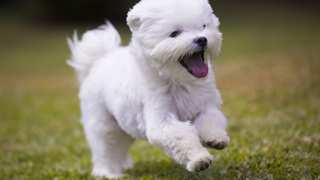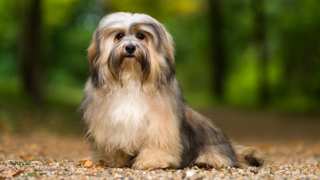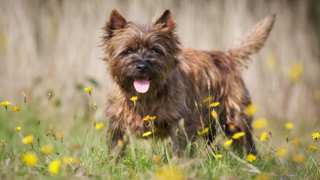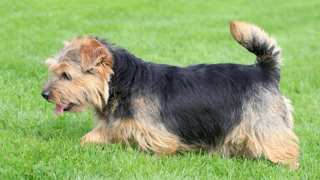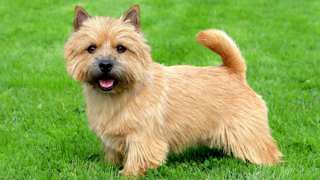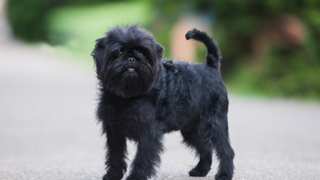Diet and nutrition for Brussels Griffons is important in keeping these little dogs healthy and long-living. Obviously, a dog of such small size won't eat a great deal of food--but the food will need to be of high quality, with plenty of animal proteins and carbohydrates for energy and--particularly in the case of the smooth-coated variety--some omega fatty acids for coat and skin health. Brussels Griffon food will also need to be free of grains like corn, barley, and oats, as many of these dogs have grain allergies. All this means that the best food for Brussels Griffons is premium grain-free food, as it'll contain the proper nutrients for them. Cheap, generic dog foods are not recommended for this breed, as they contain a lot of empty "filler" ingredients (usually including grains) that just don't satisfy a Griffon's nutritional needs.
And while premium foods are more expensive and harder to obtain, your BG won't each much of it. An adult Brussels Griffon, depending on its age and activity level, will only need about ¾ cup of premium dry food per day, divided into two meals. BG puppies will need even less: depending on the pups age, about half a cup per day will be plenty, divided into three meals per day (not two) until the puppy is six months old. Fore more info on feeding a Brussels Griffon from puppyhood through maturity, reference this chart:
Brussels Griffon Feeding ChartDog AgeDog WeightFood TypeAmountFrequency2 Months1 lbDry (Puppy formula)0.1 cups3x/day3 Months2 lbsDry0.15 cups3x/day6 Months4 lbsDry0.25 cups2x/day9 Months7 lbsDry* (Puppy/Adult)0.3 cups2x/day12 Months+10 lbsDry (Adult formula)0.4 cups2x/day*--Around this time, transition to adult food by first mixing in just a little adult formula with the puppy food. Over the course of a week, with each meal add a bit more adult food to the mix until the dog is eating it entirely.
Though the above-listed portions may seem tiny, they're ample enough for these little dogs, so it's best to try and stick to them. Surprisingly, a BG will easily become overweight if it regularly overeats--and a fat Brussels Griffon will have breathing, joint, and digestive problems, not to mention a shortened lifespan. You can control your Griffon's weight in several ways: by establishing consistent feeding and exercise schedules, by not feeding the dog table scraps, and by not leaving food in its bowl all the time, thereby allowing the dog to eat anytime it wants. It's better to put your BG's bowl down only at mealtimes, then pick it up a few minutes after the dog begins eating.
If you're worried your Brussels Griffon is overweight, you can give the dog this simple test: run a hand along its side, and if you can't feel any ribs, it's diet time. Reduce your BG's daily food consumption by a bit, and add an extra walk or play period to its daily exercise schedule.

